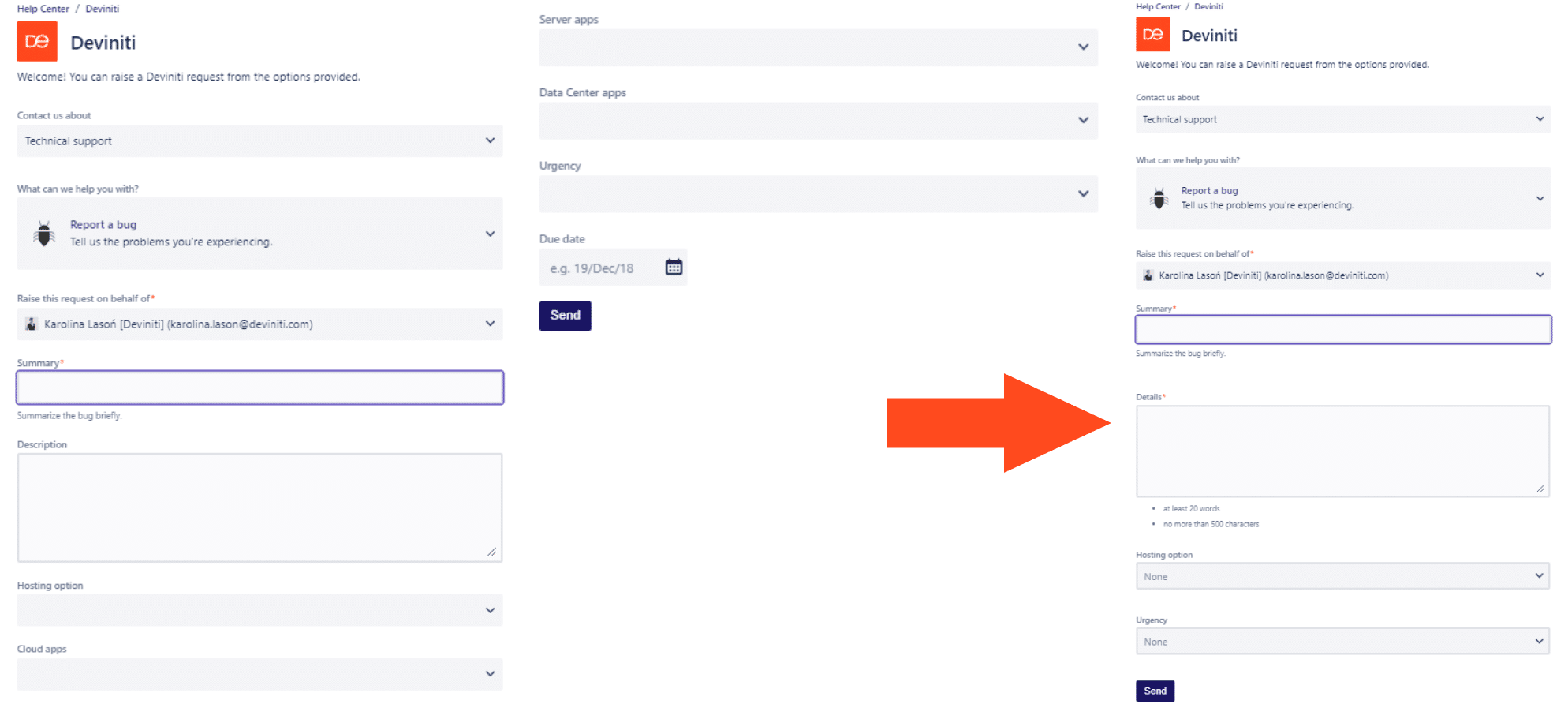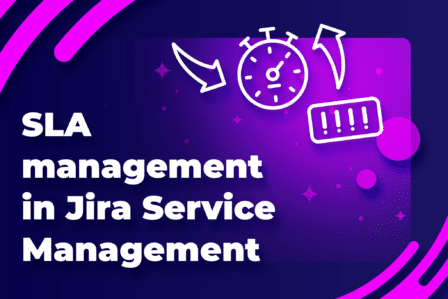How to create Dynamic Forms in Jira Service Management Cloud

Originally published on December 20, 2018, updated on May 11, 2022
Extension for Jira Service Management is our flagship app available on the Atlassian Marketplace. From its inception, this product has been providing the most wanted features improving security, usability and appearance of Server instances on Jira Service Management. Earlier this year, we became founding partners of Data Center Approved Apps program by Atlassian and added support for Jira Data Center with all features of the app, including displaying more issue details on the Request Detail View, building dynamic request forms, bundling custom fields, and more grained permissions for various elements. Recently, as an answer to many questions from our clients, we released the Cloud version of the app.
Why dynamic request forms are a hit
The shorter the request form, the better the user’s understanding of what we need from them. We already proved that point when we wrote about improving the customer journey through Jira Service Management Data Center. To provide support of the highest quality, we need to ask our clients as clear and precise questions as possible. Of course, we can do it natively in Jira Service Management Cloud by adding appropriate custom fields to the request type. However, it will also make the form longer which isn’t that great for both us and the customer. The users don’t want to spend their precious time on endless scrolling through the request form that requires many details because for example, they wanted to report a bug in their app.

Dynamic Forms enable us to avoid such a situation by shortening the form. We don’t have to worry about the length of the request form, because we know that the suitable fields will show up after the customer chooses the appropriate option in the previous question. It’s a simple top-down approach which makes it easier for the users to go from general to particular details about their problems.
Dynamic request forms already proved its value on Data Center instances in Jira Service Management. Let’s use them on Cloud as well.
4 easy steps to create dynamic forms
The configuration of Dynamic Forms on Cloud is quite different from the one on Data Center. The main difference is that while in the Data Center version of the app, we configured only the main Dynamic Field and added the appropriate custom fields in the Request types, in the Cloud version we manage both the main Dynamic Fields and the ones that respond to it in Dynamic Forms for Customer Portal in the Project Settings. We can set all the fields and options there, and set up which custom fields are required and which ones should be displayed after selecting an option or providing a specific value on the previous step. Meaning that once we’re finished with Dynamic Fields in this configuration panel, we don’t have to go back to the Request types to add the same custom fields to the form.
Similarly to the on-premise version, the configuration is effortless. However, we recommend configuring dynamic forms that are Hidden from portal. Every change on a request type is automatically saved and visible on the Customer Portal.
To create Dynamic Forms on Cloud instances, we need to:
- go to Project Settings in Jira Settings and create custom fields to the request form;
- in Project settings, go to Customer form extension and choose the request type from the list;
- then, select a dynamic field. To do that, click Add a new field. You can also click Manage fields if you want to select all or several fields at once;
- in the end, click on Conditions and set which fields should appear at the given moment.
Moreover, we can copy configured fields defined in the request form or in another Dynamic Form and use markdown to add Field help, for example when we want to list additional information, place a helpful table, graphic or link. We need to remember that for now, this configuration doesn’t support some of the field types, including: Attachment, Priority, Assignee, Issue Links, User Picker, and Multi-User Picker. Also, we should avoid adding the custom fields used in the Dynamic Forms to the request type in the Request Types configuration. Otherwise, we’ll see a notification about problems with the setting in the configuration panel, and if we ignore it, the users will see it as well with additional information to contact the Customer Portal admin.
We’ve already added more fields such as Attachment as a Dynamic Field, enabling displaying SLA metrics on the Request Detail View, and some more validators and conditions, among others. Stay tuned to get the latest news about upcoming features!
Try Extension for Jira Service Management
Take a free 30-day trial from the Atlassian Marketplace!




